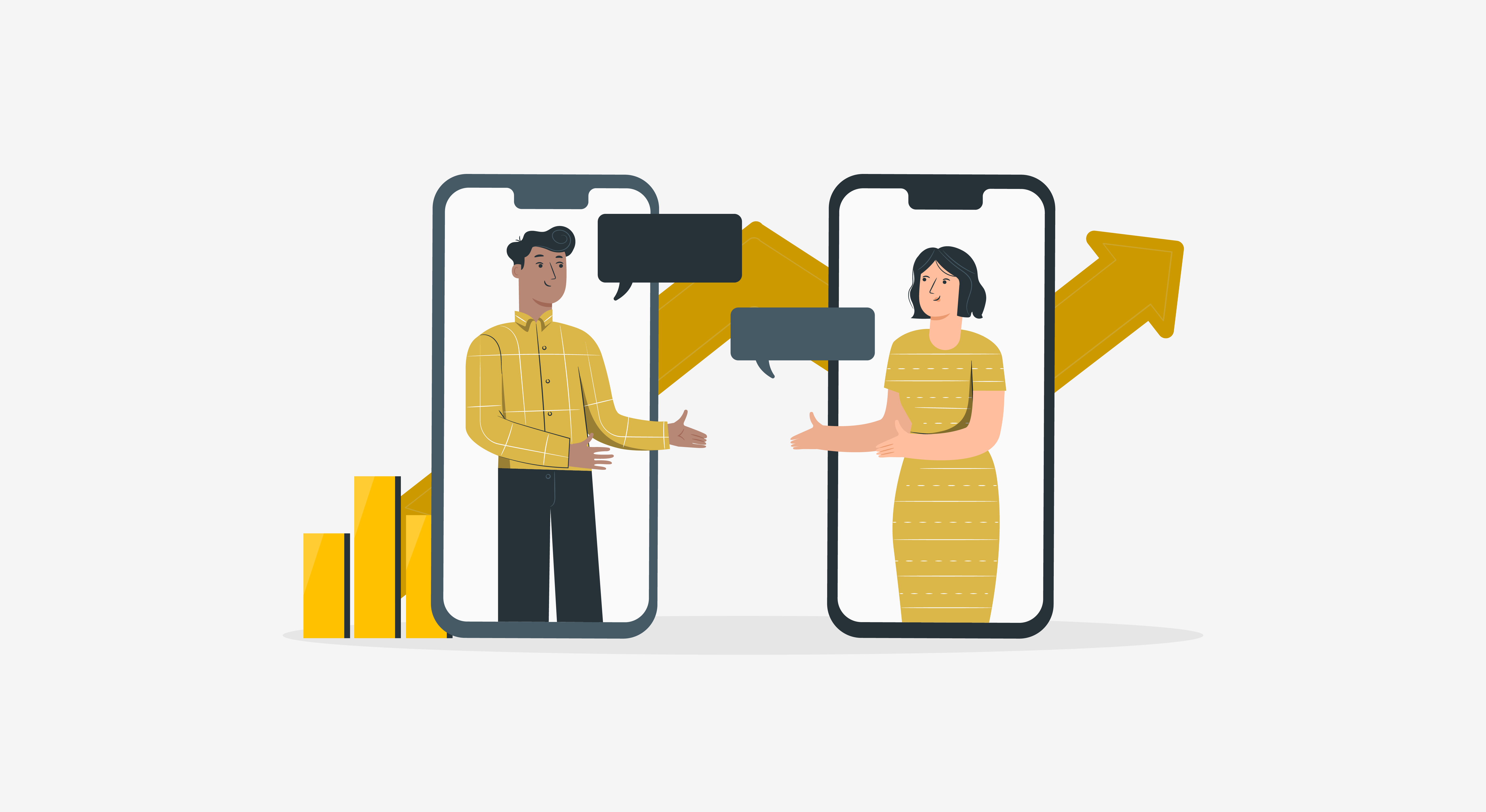Mobile app developers and mobile-first SaaS companies increasingly find the need to provide a seamless and real-time support experience. One of the easiest and most efficient solutions to this is setting up an in-app chat service. The instant popularity of in-built messaging apps like Facebook Messenger opened the horizons of in-app chat to businesses, offering them an effective way to engage with customers within the mobile app.
You know how in-app chat works but wondering why your business needs it? Read on to find the major reasons to implement in-app chat for your mobile app.
Reasons to Implement In-app Chat
1. Uninterrupted User Experience
When a customer needs help, most applications redirect them to an external link or sometimes even to a completely different platform. This interrupts the user’s experience with your app, leading to frustration and in some cases even forcing them to altogether quit your product. As a result, you might lose out on an active, potentially long term customer. In extreme cases, disappointed users might express their opinions publicly on social media, driving other potential customers away.
With an in-app chat widget feature, your customers do not have to leave the app. It enables your customers to immediately raise any questions without navigating away from your app. This makes for a proactive, seamless customer experience.
2. Faster Responses With Push Notifications
The lack of a great in-app support experience will force your customers to leave negative reviews on online app stores, deterring others from using your app. Most of the time, it is due to delayed responses. Customers expect a faster if not an immediate response when they reach out to the customer service team for support. Since in-app chat comes with push notifications, you can respond to users in real-time. This drastically brings down the overall time taken to resolve a query. With faster and more fulfilling customer interactions, you can increase the number of positive customer feedback on your app.
3. Personalized Support Backed by Contextual Data
A major edge in-app chat has over other texting apps is the personalization it brings in. In-app chat acts as a rich database of customer history and interactions that can back your agents with context when they are resolving an issue. These days where customers are exposed to a multitude of marketing messages and push notifications on their mobiles, it is important to go the extra mile to make your mobile communications personal and customized.
A push notification that doesn’t resonate with the customer or a canned response that doesn’t solve the customer issue will only be perceived as another spam message they are getting on their mobile. In-app chat support solves this by supplementing every customer interaction with rich data.
4. Ease of Integration
Remember, in-app chat may not be the only support channel your customer is using. A lack of seamless transition when customers use different channels at different touchpoints can make you look unprofessional. Moreover, having customers repeat the same information in between a resolution can lead to frustration.
You need to integrate your in-app chat history with the rest of your support channels with CRM and API integration so that your agents need not hover from channel to channel looking for information. They can find it within the chat window. HappyFox In-app chat SDK is simple, straight-forward, and built to be developer-friendly. Integrate the SDK with your help desk in minutes, thus making the transition between your support channels a hassle-free experience.
5. Better Experience With Rich Text Messaging
Support does not start and end with a few back-and-forth texts particularly in the e-commerce and technical spaces. A better way to go is allowing your agents and customers to add rich multimedia attachments like screenshots, videos, and audio messages without character limits. In-app messaging not only brings these refreshing elements into your interactions but also lets you have control over your brand tonality which would be impossible with any other forms of texting.
6. Ease of Upgrades and Scalability
While implementing in-app chat, you need to ensure that the software is supported on all future versions of iOS and Android. New upgrades and OS versions can break some features. They can lead to some disconnects in your ongoing communications before your development team can come in and fix the gaps. HappyFox in-app chat will send you functionality updates, bugs, and security fixes for every new release of iOS and Android operating systems, enabling you to take prompt measures. With the ability to be weaved into your omnichannel strategy, knowledge base, live chat software, and automation workflows, in-app chat can be scaled to suit your evolving business needs.
7. Increased Conversion with Instant Gratification
This is possibly the biggest reason to start using an in-app chat feature if you aren’t already. A chat service acts as a medium to constantly interact with your users and ensure a healthy rapport. Consistently satisfying your users is one of the best ways to improve your customer satisfaction metrics (CSAT) and convert them into long term customers. This also builds your customer support team’s reputation among your user community.
Conclusion
In-app chat is a no-brainer when it comes to offering a good mobile experience and increasing your retention and conversion rates. At HappyFox, we provide you with the In-app chat SDK to implement your own in-app chat experience. HappyFox also gives on-demand developer support to your mobile dev team if required, and long-term support for all future mobile OS releases.
Sign up for a HappyFox demo to get onboard with in-app chat today!








